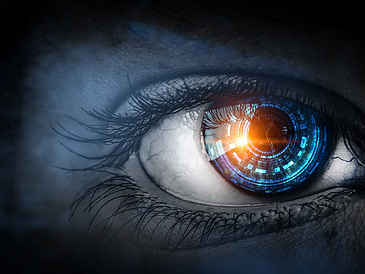“The implants should directly trigger the brain areas that are responsible for the processing of visual information,” explains Dr. Udo Ernst from the Institute of Theoretical Physics, who is part of the international I See project consortium along with his colleague Dr. David Rotermund. Alongside the two Bremen scientists, researchers from Bochum, Switzerland, and Canada are involved in I See. The European Union is funding the project with 900,000 euros.
Learning to Speak the Brain’s Language
“All attempts made to date to construct a cortical optical prosthesis often only create circular and glaring light points as visual impressions by means of electrical pulses,” says David Rotermund. “If one wishes to increase the number of light points, the parallel stimulation with several electrodes quickly leads to very large injected currents and thus to an overload of the optical system. We want to combine two novel approaches in order to evoke far more structured perceptions with less electrodes and lower currents.”
The prostheses can be significantly improved when the already available activation of the visual cortex is considered and the stimulation is suited to the information coding in the brain. “Our prostheses are to learn the brain’s language using advanced data analysis methods and are to wait for the right moment to carefully connect the desired visual impression with the prior activation of the brain. Put simply: We want to rather work with the optical system than to force the system to do what we want,” states Udo Ernst.
The implantation of cochlea implants is a medical standard when dealing with hearing. Such peripheral prostheses are, however, only possible in a restricted manner for sight. Whilst electronic retina implants can be used for certain illnesses of the retina, such as Retinitis pigmentosa, help for central conditions of the optical system, such as illnesses that are caused by diabetes mellitus, are only thinkable when directly triggering brain activity.
Globally Four Million People Affected
Brain function impairments are accompanied by massive life quality impairments The loss of vision is particularly tragic in a world that is increasingly visually steered. According to an estimate from the German Federation of the Blind and Partially Sighted (DBSV), there are around 150,000 blind and 500,000 visually impaired persons in Germany. Around four million people are affected worldwide.
Bundled Expertise from Europe and Canada
A consortium made up of five working groups in the EU and Canada have bundled their expertise in different fields of experimental and theoretical neurosciences:
- Structural and functional imaging (MRT) in the blind (Prof. Dr. Bogdan Draganski, University of Lausanne, Switzerland)
- Psychophysics in humans (Prof. Dr. Michael Herzog, EPFL, Lausanne, Switzerland)
- Electrophysiology, optical imaging, and electrical stimulation in mice (PD Dr. Dirk Jancke, Bochum)
- Electrophysiology and stimulation in primates (Prof. Dr. Chris Pack, McGill University, Montreal, Canada)
- Data analysis, modelling, and computer simulation (Dr. David Rotermund and Dr. Udo Ernst, University of Bremen)
EU Funding
The project is being funded as part of the seventh Research Framework Programme. The European Union is supporting the establishment of thematically focused networks with representatives from research funding and program creation in Europe (European Research Area Networks, ERA-NET). One of the main goals is the implementation of jointly approved European funding measures in the field of disease-oriented neurosciences. 21 funding organizations from 16 European countries, Israel as an EU-associated country, and Canada are involved in Neuron II. The Iris and Hartmut Jürgens Foundation – Chance for a New Life, is additionally funding the research in Bremen.
Further Information:
www.isee.uni-bremen.de
www.uni-bremen.de
Contact:
Dr. Udo Ernst
Institute of Theoretical Physics
University of Bremen
Tel.: +49 421 218-62002
Email: udoprotect me ?!neuro.uni-bremenprotect me ?!.de
Dr. David Rotermund
Institute of Theoretical Physics
University of Bremen
Tel.: +49 421 218-62003
Email: davrotprotect me ?!neuro.uni-bremenprotect me ?!.de

